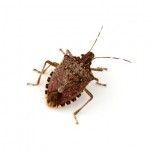READY TO GET STARTED?
REQUEST A FREE ESTIMATE
Fill out the form below or call (888) 466-7849 for a free, no-obligation estimate.
 The stink bug made it’s presence well-known this past Spring when we saw a large invasion of the pest. Well it seems that they are back.
The stink bug made it’s presence well-known this past Spring when we saw a large invasion of the pest. Well it seems that they are back.
Stink bugs feed on leaves, flowers, fruit, crops, and even other pests, such as caterpillars. They can damage plants and crops but luckily besides the foul odor they emit when they are crushed or threatened, they do not cause harm to humans.
Prevent stink bugs from making a comeback in your home:
You are probably seeing cicada killer wasps working overtime these last few weeks of summer. They are preparing to overwinter by digging their underground burrows and stuffing them with paralyzed cicadas that they will use as food for their larvae.
Cicada tunnels can range from 30-70 inches long and run 12-15 inches below the surface. Each tunnel has an average of 15 side chambers. Each tunnel contains 1-3 paralyzed cicadas and a cicada egg that is due to hatch in 2-3 days. The larvae will feed for about 10 days before leaving the tunnel. Cicadas only produce one generation each year.
Cicadas do not have a pack mentality; they are typically a solitary species. They prefer dry, light textured soils in full sunlight that are near trees that harbor other cicadas. Common places to find cicada killers are along sidewalks, patios, in flowers beds, gardens, sand boxes and in lawns.
Female cicadas have stingers that are used to inject venom into other cicadas that causes them to be paralyzed. Female cicada stings are very painful. Luckily, females are not territorial like honey bees or hornets. Male cicadas do not have stingers but are very territorial.
Female cicada killers burrow and dig tunnels which cause the soil to be misplaced and smother grass. Cicadas dig loose soil in garden and flower beds that can ruin garden plants and/or vegetables. A burrow at the base of a plant can disrupt the root system.
Cicadas do not like wet soil so keeping soil watered will deter them from making their borrows and cause current cicadas to abandon the site. Watering the soil can also help to settle the soil back into the ground if it has been disrupted by a burrowing cicada. Another tip is to regularly stir soil or sand to discourage wasps from creating tunnels.
When treating for cicadas, the application should be made directly into the burrow or at entrance. If you have cicadas messing up your lawn, call Northwest!
 So long are the days of only having to worry that your kids may get head lice in school…you can now add bed bugs to that list. You’ve heard about the risk of bed bugs when returning back to college but now bed bugs are popping up in elementary, middle, and high schools.
So long are the days of only having to worry that your kids may get head lice in school…you can now add bed bugs to that list. You’ve heard about the risk of bed bugs when returning back to college but now bed bugs are popping up in elementary, middle, and high schools.
Bed bugs are making their way into schools through back packs. And while they can’t be transferred from person to person, they can be transferred from back pack to back pack.
The good news is that bed bugs are NOT a sanitation issue and they do not carry diseases. Bed bugs are not a sign of a dirty home but they are very difficult to get rid of.
If you are notified that there may be a chance that your child’s back pack has been infested do not panic…there are things you can do to ensure that they are not brought into your home.
For more information on bed bugs visit the Georgia Department of Public Heath: http://www.health.state.ga.us/epi/zvbd/infest/index.asp
A wasp sting can potentially be very dangerous to those in your home, including yourself, your children, and even your pets. If allergic, a sting can cause severe complications, and even death. Even for those that aren’t allergic, a wasp sting is painful and can cause itchiness and infection at the site of the sting.
Needless to say, if there is a wasp nest around your home it is very important that you get rid of it. Since nests are usually home to a colony of wasps they can be dangerous to try to remove by yourself. We suggest calling a professional exterminating company, like Northwest Exterminating, to remove the wasp for you, especially if you have an allergy to stings.
You can purchase a can of wasp remover at your local hardware store. For best results and safety, read and follow all directions on the label. Most labels will tell you that nighttime is the best time to treat because the wasps will either be inside the nest or on the nest. Make sure that you have an “exit” plan for when the wasps come out of their nest. You don’t want to have to run through their swarm to get back inside your home. Wearing protective clothing (long sleeves and pants, gloves, hat, safety goggles, and mask) spray directly into the nest. Once you have sprayed for the amount of time suggested on the can, leave the area immediately. Most products will advise you to wait a specified amount of time before visiting the area of the nest. Once activity around the nest has seized, knock down the nest and dispose of the nest in a covered trash can outside of the home.
We strongly recommend that you contact Northwest Exterminating, or your professional exterminating company, to remove a wasp nest if you:
Where is the strangest place you’ve seen a wasp nest around your home?
Fruit flies are a nuisance in homes! That’s the bottom line! They seem to come out of nowhere and are extremely hard to get rid of. But the truth is, they don’t come out of nowhere…they come from up to miles away when they have smelled the scent of ripening fruit and vegetables. Because they are so small they are able to fit through even the tiniest of openings to get inside your home and to the fermenting fruit.
“Well that’s easy enough”, you say, “just throw away the fruit once you’ve seen fruit flies”…it’s not that easy. Fruit flies are fast reproducers! Fruit flies can lay up to 500 eggs at a time and their entire life cycle only takes 8-10 days. This makes them difficult to control once they have infested your home. It’s not just the fruit they are after, they can also lay their eggs in sink drains, garbage disposals, empty bottles and cans, garbage bags, and even damp mops and sponges.
Getting rid of fruit flies is difficult but it’s not impossible. By following some simple steps you can rid your home of fruit flies and ensure that they don’t return.
How to get rid of fruit flies: